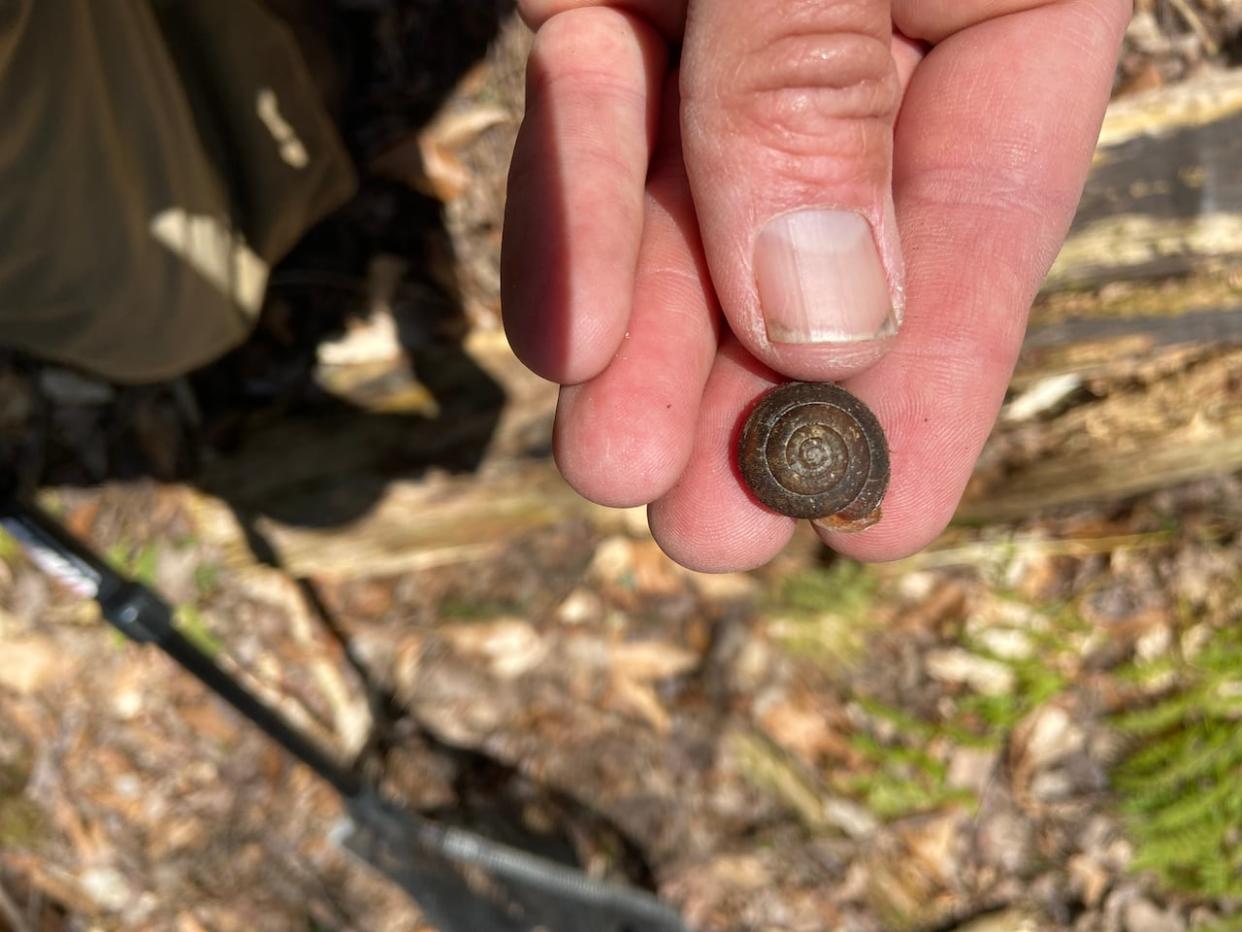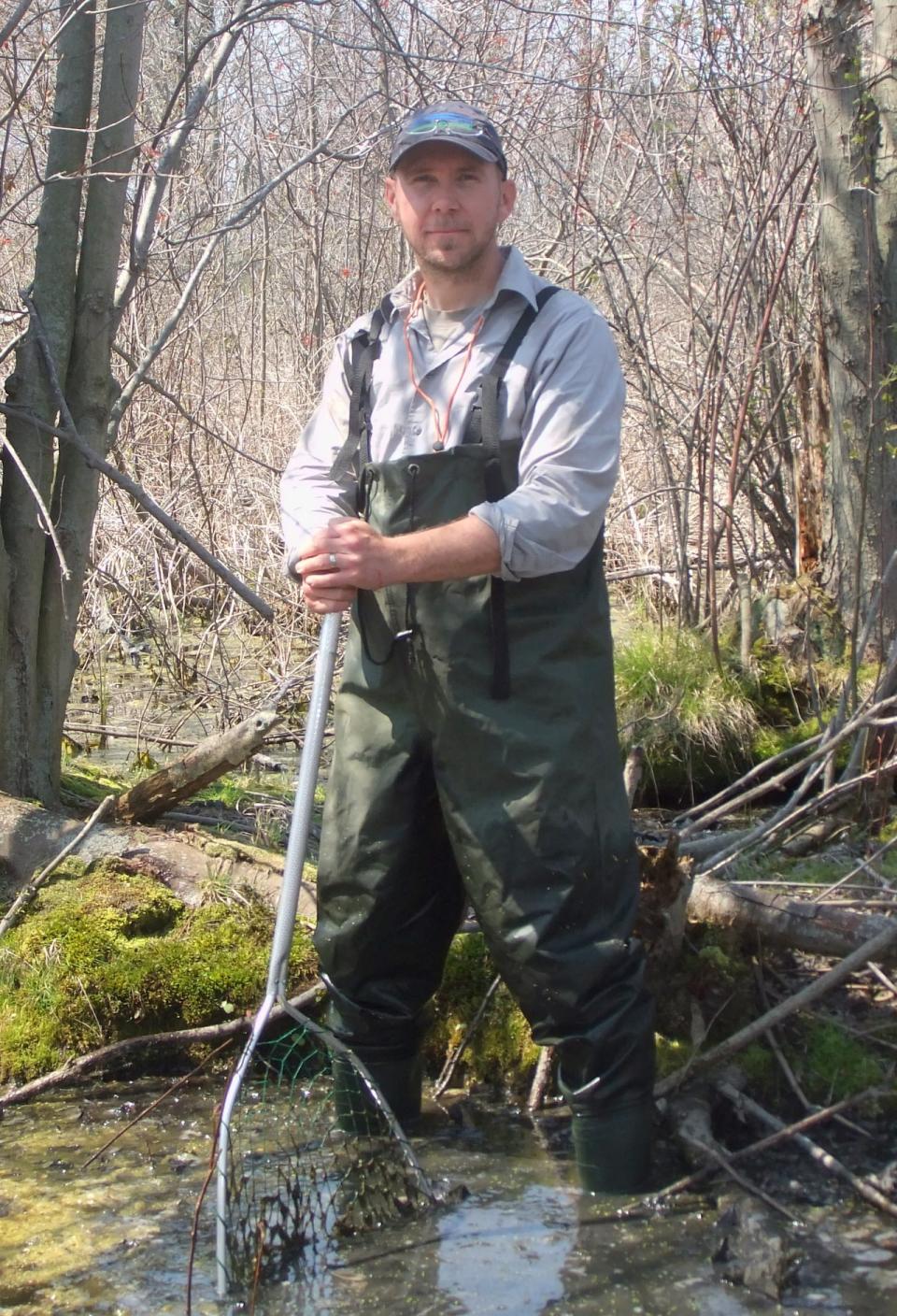These endangered snails were thought to have disappeared from most of Canada — until now

An endangered snail species thought to have disappeared from many parts of Canada has been discovered in the Upper Thames River watershed, according to a biologist with the Upper Thames River Conservation Authority (UTRCA).
Shagreens are a terrestrial snail listed as endangered provincially and federally but recently, they have been confirmed sightings in southwestern Ontario.
"Not only are they rare in Canada, but the last mainland population may now be gone, making this newly found population the only one in mainland Canada," said Scott Gillingwater, the UTRCA's species at risk biologist.
Gillingwater says he saw two shagreen snails between April 2023 and April 2024 in Snake Woods Nature Preserve, near Woodstock, an area they've never been recorded in before. Mollusk experts have also confirmed the two sightings as legitimate.
Shagreens used to be found in two sites near Leamington, Ont., and on five islands in Lake Erie. More recently, it was thought they only existed on Pelee Island and Middle Island due to habitat loss.
Snails were misidentified initially
The snail's off-brown colour shell and tooth-like protrusions where the body exits the shell are features shared by other local species, but the shagreen lacks a hole on their bottom side.
The similarities are one reason Gillingwater said he at first misidentified a live shagreen he found when he posted his sighting on the citizen science platform iNaturalist in late April 2023.
"I had assumed it was a northern threetooth, so shagreen wasn't even on my radar because it's so far south and they share characteristics," Gillingwater said.
That's an identification that stood unchallenged until one month ago, when an iNaturalist user suggested the snail might be a shagreen.
"We contacted Canadian experts ... they were able to confirm that it was shagreen and that it is now the most northerly representation of the species in Canada, and potentially the last mainland population," said Gillingwater.

Scott Gillingwater, species at risk biologist with the UTRCA, says he found two shagreen snail specimens roughly one year apart. (Submitted)
One year after the first sighting, Gillingwater saw another shagreen snail in the Woodstock area, this time of a dead specimen. The fact that snails don't move long distances on their own, and the only known populations to this point were waterlocked, means it's likely shagreen snails have been living in the area all along, he said.
"It's likely that when southwestern Ontario, especially the Carolinian region, was completely forested from one end to the other, before European settlement, these animals were probably in larger populations. At Snake Woods, we have an intact protected forest that has been protected for a long time."
Now that the snails have been found, the work of finding the scope of the newly discovered population, and working to protect them, begins, Gillingwater said. More scientists will be in the area in the near future, taking stock of the shagreen snail population in and around Snake Woods.
That research with be important in making sure the snails are protected from existential threats — the most pressing of which could be climate change and the weather extremes it brings, Gillingwater said, adding that the snails require particular levels of moisture that could become harder to come by with climate change.
Gillingwater also said the discovery is a testament to the power of citizen-driven, collaborative science on platforms like iNaturalist, where people can record and discuss their findings throughout the world.
"If it weren't for the individual that corrected my mistake, this snail could have fallen through the cracks and we may have never known it was there."

 Yahoo News
Yahoo News 
